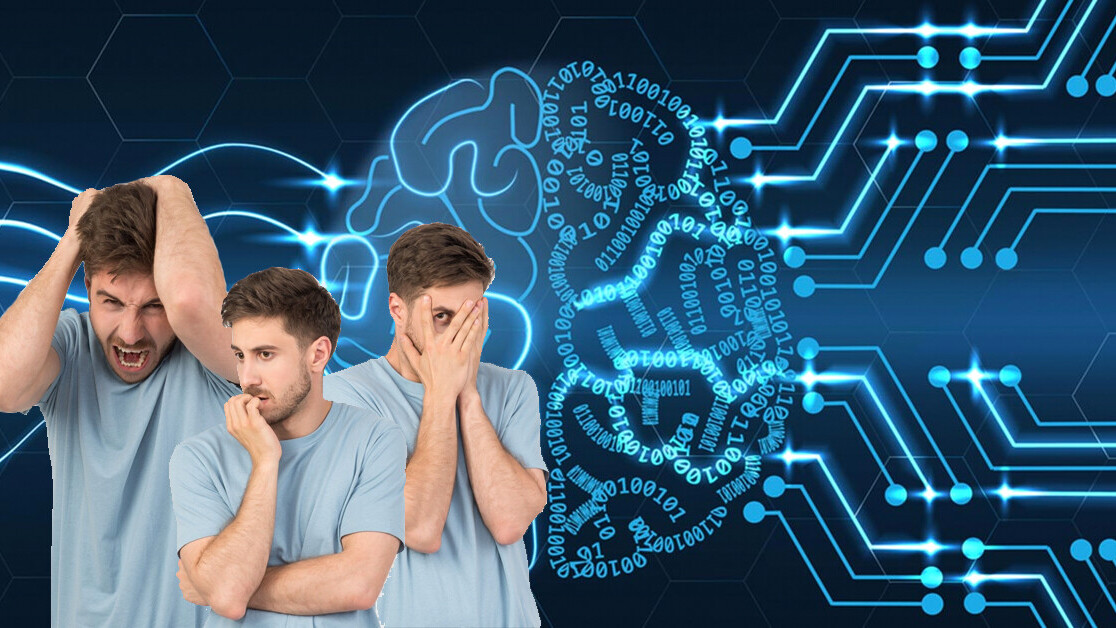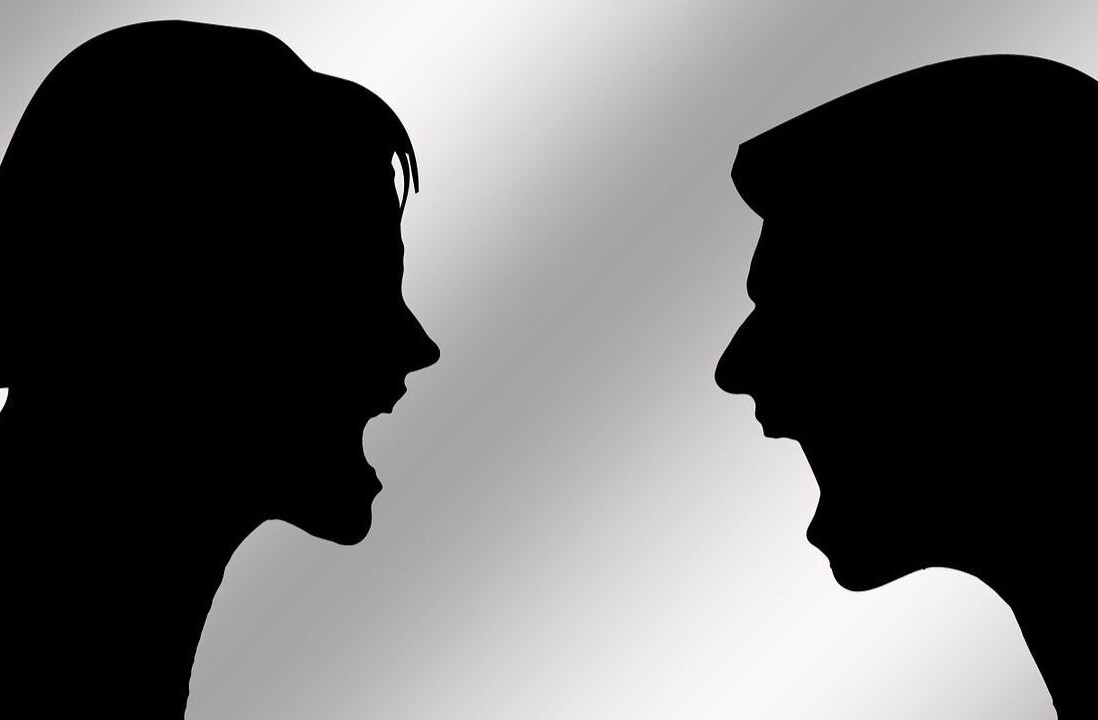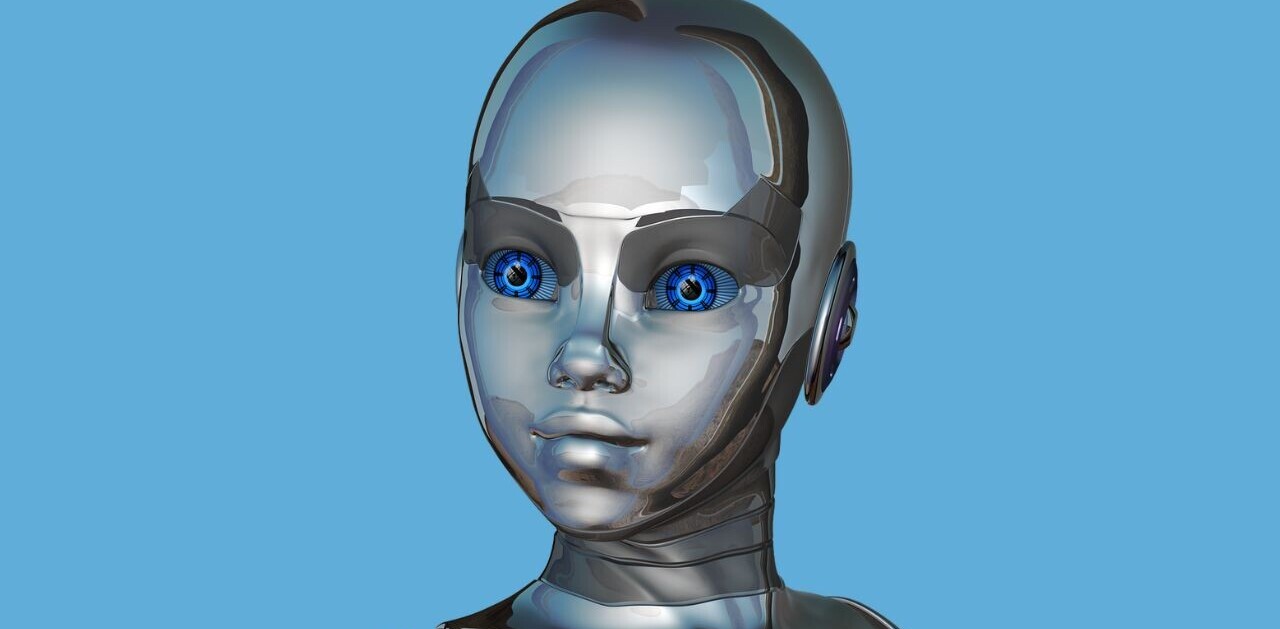
Did you know TNW Conference has a track fully dedicated to bringing the biggest names in tech to showcase inspiring talks from those driving the future of technology this year? Tim Leberecht, who authored this piece, is one of the speakers. Check out the full ‘Impact‘ program here.
“If there is pain, nurse it, and if there is a flame, don’t snuff it out, don’t be brutal with it. Withdrawal can be a terrible thing when it keeps us awake at night, and watching others forget us sooner than we’d want to be forgotten is no better. We rip out so much of ourselves to be cured of things faster than we should that we go bankrupt by the age of 30 and have less to offer each time we start with someone new. But to feel nothing so as not to feel anything — what a waste!”
These are the words of the closing monologue of the movie Call Me By Your Name (based on the namesake book by Andre Aciman); the monologue of the father, Mr. Perlman, who assures his son Ellio of the inconceivable magnitude of emotions, insisting that even the most conflicted ones are better than none.
These lines could not be more timely. We have begun to realize that feeling more not only makes for richer lives but is also the best antidote to a world of self-optimization and efficiency, in other worlds, a world of machines.
Efficiency and love: A new affection for affection
At the World Economic Forum in Davos this year, Alibaba co-founder and executive chairman Jack Ma made the case for investing in our emotional capacities and even proposed a “love quotient.” Management thinkers believe that socio-emotional skills are going to be a key asset in tomorrow’s marketplace, simply because tasks requiring operational excellence and efficiency are likely to be performed much more effectively by AI and robots. Emotions, however, remain a human bastion. Our very weakness is our strength.
In a 2016 survey, the World Economic Forum ranked socio-emotional skills as increasingly critical for future career success. Business schools are adjusting their curricula to include them, and private educational institutions such as The School of Life have made it their mission to teach them.
Read: [Humility, trust, and empathy: The skills needed to work with robots]
And yet, despite our most ambitious efforts to demystify them, emotions remain utterly mysterious and elusive. They are better felt than explained, better portrayed — often through works of arts — than analyzed. We don’t understand them unless we feel them, and feeling them, of course, is the very blind spot that may prevent us from ever ‘objectively’ understanding them.
Schadenfreude: One of the 27 emotions?
There even appears to be some confusion as to what counts as human emotion and what does not, and which of our emotions are distinctive. For a considerable period of time, common wisdom held that there is a base set of six “classic” emotions: happy, surprised, afraid, disgusted, angry, and sad. But in 2014, a study by the Institute of Neuroscience and Psychology at the University of Glasgow claimed there are only four basic emotions — happy, sad, afraid/surprised, and angry/disgusted. Ah, wouldn’t life be easy and yet oh-so-boring if that were the case!?
However, in 2017, a new study by the Proceedings of National Academy of Sciences suggested that there are as many as 27 different categories of emotions, and that they in fact occur along a gradient and are not sharply distinguishable or mutually exclusive. This new set of emotions ranges from admiration, adoration, awe, and surprising outliers such as “aesthetic appreciation,” to envy, excitement, horror, and “empathetic pain” to equally unexpected contenders such as nostalgia, romance, or triumph.
Looking at this comprehensive list, a few emotions stand out. One wonders whether romance is an emotion or a feeling, an interpretation of an emotion, or simply a way to relate to the world. Similarly, the omission of loneliness is glaring, although in this case, too, one could argue that it is a feeling, not an emotion. Per neuroscientist Dr. Sarah McKay’s definition, “feelings are mental experiences of body states, which arise as the brain interprets emotions, themselves physical states arising from the body’s responses to external stimuli.” Yet the line between the two remains blurry.
Moreover, some emotions may not have been listed because they are culturally unique, e.g. Schadenfreude, the very German joy over another person’s mishap or misfortune. Or these Bantu, Taglog, and Dutch terms: mbuki-mvuki — the irresistible urge to “shuck off your clothes as you dance” — kilig — the fluttering feeling as you talk to someone to whom you are attracted — or uitwaaien — the refreshing effects of taking a walk in the wind. Others that were included in the list — such as “triumph”–appear to be a temporary sign of our times more than a fixed emotion: in our winner-takes-all societies, winning is arguably the one emotion that is putting all the others in second place. The winner feels it all.
Empathy: Machines, we feel for you
How will digital technology, specifically AI and robotics, affect our emotions?
Researchers have long studied our emotional relationship to machines. Numerous studies have proven that we quickly form emotional attachments to robots, and it might indeed be worthwhile exploring which social skills we need in order to collaborate with them.
So-called Artificial Emotional Intelligence (AEI), advanced by firms such as Affectiva, Emotient (acquired by Apple), and Emotion Research Lab, now seeks to analyze our emotions by scanning our facial expressions and body language. From studying Mark Zuckerberg’s behavior during the congressional hearings to the use for candidate assessments in job interviews (HireVue), AEI, like any technology, can be used for benevolent and malicious purposes, from boosting our emotional intelligence to manipulating and emotion-engineering us as citizens and consumers, from helping autistic children recognize their emotions (see, for example, the Kaspar project) to penalizing us at the workplace for not being happy.
Empathetic robots occur at the timely convergence of two trends: empathy and AI. As we fear the loss of civility and with xenophobia, racism, and nationalism on the rise in many liberal societies, empathy has become a hot topic, and initiatives to muster it range from podcasts with those who are not like us or even bully us (e.g. Conversations with People Who Hate Me) to MIT’s Deep Empathy initiative or Google’s Empathy Lab, to using VR and other immersive technologies as the great “empathy machines.”
At this year’s Consumer Electronics Show in Las Vegas, several robots were exhibited that can apply empathy and emotional intelligence toward their human user, e.g. the social robot Buddy; the table-tennis playing Forpheus that can read its opponents’ body language to anticipate their moves; or Pepper, which is “capable of interpreting a smile, a frown, your tone of voice, as well as the lexical field you use and non-verbal language such as the angle of your head,” according to its manufacturer, SoftBank. In Japan, a society with an aging population, empathetic robots like Paro, applied in elderly care, are becoming a mainstream phenomenon.
Analyst firm Gartner recently predicted that by 2022 smart machines will understand our emotions better than our close friends and relatives, which of course is an outrageous claim, as the ethnographer Jonathan Cook has pointed out: “The more certain research firms claim to be in their ability to measure emotion with quantitative precision, the more incompetent they are likely to actually be at accomplishing the task — because they have lost touch with what emotion actually is,” he writes.
Envy, FOMO, Boredom: Conscious emotions are a late achievement of evolution
And yet, the question remains: If robots become better at reading and responding to our human emotions, could technological advances in AI and robotics lead to the emergence of new emotions that were not only previously unmeasured, unnamed, and unidentified, but also un-felt?
You could argue that all possible human emotions have always been present and that we just lacked the words to describe them and only over time simply refined our understanding of them. But there are good arguments for accepting the notion of a history of emotions, the belief that emotions, like our bodies and cognitive abilities, have evolved over time as well, in response to everchanging environments and social stimuli.
Piotr Winkielman and Kent Berridge, psychologists at the UC San Diego and the University of Michigan, conducted an experiment in 2014 in which they showed participants sad and happy faces in such fast order that these had no conscious awareness of seeing any faces at all. When participants were asked afterward to drink a new lemon-lime beverage, those who had subliminally been exposed to the happy faces rated the drink better and also drank more of it than the others. The researchers took this as evidence to suggest the existence of “unconscious emotions”: feelings we have without actually feeling them. “Evolutionarily speaking, the ability to have conscious feelings is probably a late achievement,” they concluded. In other words, a sentimental education, the education of our hearts, may indeed have been an accomplishment of civilization, a blessing and curse of modern man alike.
Aside from our consciousness of emotions, evolution may have caused new emotions to form. Take envy, and specifically “status envy,” as a more recent phenomenon, as a product of the industrial revolution and growing consumerism in developed countries. Envy necessitates a materialistic culture. Envy, if you will, is the refined, commoditized version of jealousy. It describes the disappointment and humiliated self that doesn’t possess or receive what another one does, a self that finds itself excluded from the marketplace and not able to participate in the transaction.
The natural companion to envy in today’s experience economy is FOMO — the Fear-Of- Missing-Out. This fear is about missing out on experience: it is a preemptive fear of loss as much as it is an envy for another’s, possibly richer and more rewarding experience. Ultimately, FOMO is a fear of dying — dying without having lived.
While FOMO is its perverse version, boredom is the real horror vacui. At first glance, it seems like an increasingly precious good. In fact, boredom might become extinct because of the proliferation of smart phones and other devices that deprive us of any vacant moment in time. However, due to automation and the loss of traditional employment, many of us will face more unstructured time in the future and will need help to combat the numbness of boredom as it engulfs our lives.
Awe: Mixed emotions are the future
At the TED conference this year, science writer Jessa Gamble held a fascinating workshop on awe, an emotion triggered, by say, entering the St. Peter’s Basilica or experiencing the vastness of a desert.
Gamble referenced Stanford researcher Melanie Rudd who studied the effects of awe on consumer behavior and claims that after feeling awe we tend to choose experiential goods like a movie over material goods like clothes. She further concludes that it also makes us more willing to volunteer in our communities. It looks like we need not only citizenship classes but also experiences of awe to build more civil societies. It is important though to note that awe empowers and disempowers at once. It makes us bigger — and smaller. Gamble pointed out that the “smaller self” was both a prerequisite and consequence of awe: awe overpowers the self. That is both inspiring and humbling.
This very sentiment is at work in our relationship to AI and robots: we are in awe of them, which means, we are enamored and terrified at the same time. The “uncanny valley” — a term used to describe the creepiness of an AI that is nearly fully artificial nor fully flesh, that is arrested at the blurry border between robotic and human, just humanoid enough to trigger our perception of human derangement — will be our constant state for the foreseeable future.
It is this tension, this kind of contradictory feeling, that might serve as a blueprint for the future of emotions. The range of what we feel may increase, and it will be less and less binary. Even our language will have to catch up and come up with neologisms expressing this ambivalence. As always, the Germans are especially skilled at inventing new verbs, just consider “Verschlimmbessern” (which, loosely translated, means making something significantly worse by trying to make it incrementally better).
Mindfulness, ikigai, purpose: As emotions go extreme, we want to feel more balance
On the one hand, we are witnessing a radicalization of our emotions, as they are fleeing to the extreme edges (most of us will nod their heads in response to a book title like Pankaj Mishra’s “The Age of Anger”); on the other hand, our emotions are becoming more mixed, more conflicted, with different kinds of emotions overlaying each other.
At the same time, the volatility and complexity of our digital times are popularizing emotional states that are simple and balanced, such as mindfulness or the Japanese concept of ikigai that is attracting more and more followers in the Western world. The Japanese island of Okinawa, where ikigai has its origins, is said to be home to the largest population of centenarians in the world, and one of the allures of ikigai is the promise of longevity. Ikigai is the convergence of four primary elements: What you love (your passion), what the world needs (your mission), what you are good at (your vocation), and what you can get paid for (your profession).
Ikigai is similar to the Western concept of purpose that has emerged as the holy grail of organizational and personal transformation. “What’s your purpose?” — as a brand, company, individual, and even nation — is the biggest and yet the smallest question everybody is happy to ask and only rarely really able to answer, despite an army of consultants and agencies devoted to it. It is not an entirely new concept. The American philosopher and civil rights leader Howard W. Thurman put it best: “Ask what makes you come alive, and go do it. Because what the world needs is people who have come alive.”
Mindfulness, ikigai, or purpose are neither emotions nor feelings — they are techniques to help us restore balance as our emotions become more extreme and tools to help us refine how we manage them.
Intimacy and romance: Does it matter if our emotions are real as long as we’re feeling them?
Naturally, emotions, too, are affected by the digitization, the atomization of our lives. In our fast-paced daily interactions, micro-aggressions — the subtle humiliation by a cranky waiter — can sour our mood as much as moments of micro-attachment — the smile of a stranger on the subway — can make our day. It appears that we’re transitioning from one emotional state to another much more quickly (the psychologist Susan David has coined the term “emotional agility” to pinpoint a new skill we must develop to cope with this phenomenon), that we’re losing the middle ground, the common thread, as well as the stability and continuity of long-term relationships. Instead, we are satisfying our emotional needs either through the instant kicks of the “dopamine economy” online, little escapisms (social media, gaming, movies, travel), or big ones: assuming an alternate identity, an avatar, a fluid self.
This virtualization of our selves may ultimately lead to the virtualization of our emotions, too, with us going from experiencing age-old emotions in new virtual environments to experiencing new emotions in digital or at least partly digital interactions, to full-on surrogate emotions, digital placeholders of the real thing: fake intimacy, virtual grief, and so on.
Japanese roboticist Hiroshi Ishiguro, who builds humanoid robots and was recently portrayed in this riveting Wired story, is convinced that human emotions are nothing more than responses to external stimuli. David Levy, in his seminal 2007 book, Love and Sex With Robots, subscribes to this point of view: “If a robot behaves as though it has feelings, can we reasonably argue that it does not?” He argues that human emotions are no less programmed than those of an AI: “We have hormones, we have neurons, and we are ‘wired’ in a way that creates our emotions.” Levy projects that roughly by the year 2050 humans will want robots as friends, sexual partners, and even spouses.
This raises some big questions: Will it matter if our human emotions are increasingly manipulated by smart algorithms or even un-real, or does it suffice that we feel them? Have emotions ever been pure — and can they? Arguably, we’ve never had much control over them. Emotions are never fully ours — rather, despite our insisting on their private nature, they’re part of the public commons and some sort of open-sourced software. And yet, so much of what we feel we are incapable of sharing. We seem to lack the full code for unlocking it, which causes great frustration — and a great desire to overcome it. Perhaps, in the future, hacking our brains may involve hacking our emotions, too. Technology may allow us to (re-)mix our emotions together with those of others, as the ultimate form of deep connection.
What makes us human is our proclivity to fall for the other: somebody who is not us, something beyond our control, greater than ourselves. We can’t help but be drawn to persons, objects, or experiences that promise us new emotions, new sensations, new highs and lows, new joy and happiness, but also new heartbreak and suffering.
Although we are calling them by our name (Alexa, Buddy, Sophia, Kaspar, Samantha, Erica….), as a mirror of ourselves, the AI bots remain elusive. They are the enigmatic other, the greatest desire of all, the ultimate romance. If they can help us feel more and feel new emotions, and if we refine these emotions through more advanced emotional intelligence, with the arts and humanities as our interpreters, then the very machines that are growing adept at analyzing and manipulating how we feel will ensure that we stay a step ahead of them.
This article was originally published by Tim Leberecht, an author, entrepreneur, and the co-founder and co-CEO of The Business Romantic Society, a firm that helps organizations and individuals create transformative visions, stories, and experiences. Leberecht is also the co-founder and curator of the House of Beautiful Business, a global think tank and community with an annual gathering in Lisbon that brings together leaders and changemakers with the mission to humanize business in an age of machines.
Get the TNW newsletter
Get the most important tech news in your inbox each week.




